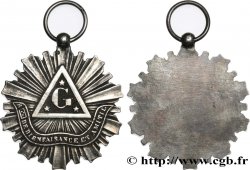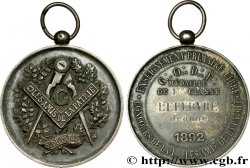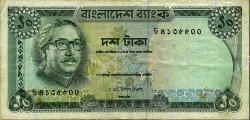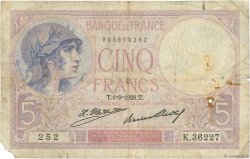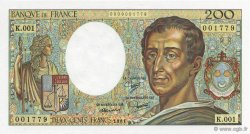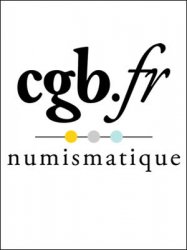fjt_081375 - FRANC-MAÇONNERIE - PARIS Loge de la Concorde, Orient de Vienne 1781
non disponibile.
Articolo venduto sul nostro negozio (2011)
Prezzo : 250.00 €
Articolo venduto sul nostro negozio (2011)
Prezzo : 250.00 €
Tipo : Loge de la Concorde, Orient de Vienne
Data: 1781
Metallo : metallo bianco
Diametro : 37 mm
Peso : 7,94 g.
Orlo : lisse
Grado di rarità : R1
Commenti sullo stato di conservazione:
Exemplaire superbe avec une patine grise
N° nelle opere di riferimento :
Diritto
Titolatura diritto : CONCORDE ORIENT DE VIENNE.
Descrittivo diritto : Un compas et une équerre accostée de la lune, d’une étoile et du soleil ; au centre : un marteau et une truelle en sautoir et attachés au compas, une bonne foi et le millésime 5781.
Rovescio
Commento
Le revers lisse était destiné à recevoir une attribution comme l’exemplaire représenté dans le Hamburgische Zirkel-Correspondenz ou dans le labouret. Ce jeton date en pratique de la première moitié XIXe siècle.
La franc-maçonnerie s’implante en France aux alentours du premier quart du XVIIIe s. sous l’influence d’aristocrates anglais. Initiatique, elle est fondée sur le rite hiramique, du nom d’Hiram de Tyr, personnage biblique, architecte du roi Salomon sur le chantier du Temple et qui a résisté à la torture sans livrer ses secrets. Hiram a aussi donné un point de départ du calendrier maçonnique commençant 4000 ans avant le calendrier chrétien. Les symboles servent de signes de reconnaissance entre les initiés, notamment des outils de constructeur de cathédrales (équerre, compas, niveau, maillet, etc.), des formes (triangle, étoile), des nombres (trois, cinq, sept) et des lettres.
The smooth reverse was intended to receive an attribution like the example represented in the Hamburgische Zirkel-Correspondenz or in the laboret. This token dates in practice from the first half of the 19th century. Freemasonry was established in France around the first quarter of the 18th century under the influence of English aristocrats. Initiatory, it is based on the Hiramic rite, named after Hiram of Tyre, a biblical character, architect of King Solomon on the construction of the Temple and who resisted torture without revealing his secrets. Hiram also gave a starting point for the Masonic calendar beginning 4000 years before the Christian calendar. The symbols serve as signs of recognition between initiates, including cathedral builder's tools (set square, compass, level, mallet, etc.), shapes (triangle, star), numbers (three, five, seven) and letters
La franc-maçonnerie s’implante en France aux alentours du premier quart du XVIIIe s. sous l’influence d’aristocrates anglais. Initiatique, elle est fondée sur le rite hiramique, du nom d’Hiram de Tyr, personnage biblique, architecte du roi Salomon sur le chantier du Temple et qui a résisté à la torture sans livrer ses secrets. Hiram a aussi donné un point de départ du calendrier maçonnique commençant 4000 ans avant le calendrier chrétien. Les symboles servent de signes de reconnaissance entre les initiés, notamment des outils de constructeur de cathédrales (équerre, compas, niveau, maillet, etc.), des formes (triangle, étoile), des nombres (trois, cinq, sept) et des lettres.
The smooth reverse was intended to receive an attribution like the example represented in the Hamburgische Zirkel-Correspondenz or in the laboret. This token dates in practice from the first half of the 19th century. Freemasonry was established in France around the first quarter of the 18th century under the influence of English aristocrats. Initiatory, it is based on the Hiramic rite, named after Hiram of Tyre, a biblical character, architect of King Solomon on the construction of the Temple and who resisted torture without revealing his secrets. Hiram also gave a starting point for the Masonic calendar beginning 4000 years before the Christian calendar. The symbols serve as signs of recognition between initiates, including cathedral builder's tools (set square, compass, level, mallet, etc.), shapes (triangle, star), numbers (three, five, seven) and letters








 Segnalare un errore
Segnalare un errore Stampate la pagina
Stampate la pagina Condividi mia selezione
Condividi mia selezione Fai una domanda
Fai una domanda Consegnare / vendere
Consegnare / vendere
 Descrittivo
Descrittivo
